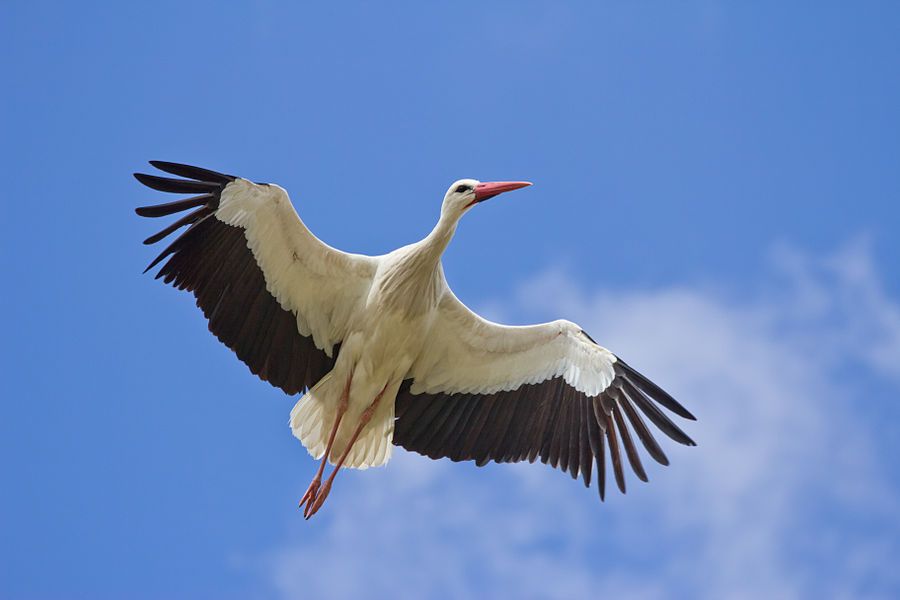Facts About White stork
The white stork is a striking bird characterized by its predominantly white plumage, black-tipped wings, long red legs, and sharp red beak. This large bird measures about 100 to 115 cm in length and boasts a wingspan of 155 to 215 cm. White storks are long-distance migrants, journeying between Europe, Africa, and Asia. They are carnivorous, feeding on a diverse diet that includes insects, fish, amphibians, reptiles, and small mammals.
White storks are monogamous and build large nests out of sticks, where they typically lay four eggs. These eggs hatch at different times, and the young storks are ready to leave the nest after about 58 to 64 days.
There are two subspecies of the white stork: C. c. ciconia and C. c. asiatica. These subspecies differ slightly in their breeding and wintering locations. White storks have been around for millions of years, with fossils evidencing their long history. They are closely related to other stork species and have been studied extensively in evolutionary research.
White storks can be found breeding in large numbers in countries such as Poland, Ukraine, Spain, and Portugal. Due to conservation efforts, their populations have rebounded in areas where they had previously declined due to industrialization and changes in agricultural practices. Since 1994, the IUCN has classified the white stork as a species of least concern.
These birds are not without their challenges; they can host various parasites and diseases. Their nests often harbor mites and other arthropods, and the storks themselves can carry internal parasites and be affected by diseases such as West Nile virus.
In European folklore, the white stork is famously associated with delivering babies. This charming myth has made the stork a symbol of good luck and has been featured in numerous stories and legends. The bird's cultural significance extends to its appearance on postage stamps and its status as the national bird of Lithuania, Belarus, and Poland.
Conservation efforts continue to focus on reintroducing white storks to areas where their numbers have dwindled. Their cultural importance has made them a subject of interest across various fields, from psychology to mythology.

 Czech Republic
Czech Republic